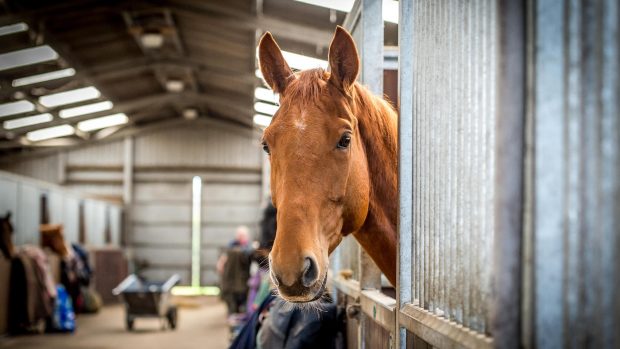Q: My horse has been lame for about a month now. The vet thinks there could be a serious problem, such as a hairline fracture or disease in the bone. He suggested we X-ray the bones using a method called “scintigraphy”. Could you please explain what this is?
Harvey Carruthers MRCVS replies: Scintigraphy is a technique which is used to picture the equine skeleton using a special imaging camera.
Though other techniques can be used, such as ultrasound, the scope of scintigraphy is most comparable to traditional radiographic (X-ray) techniques although the equipment required is highly specialised making it considerably more expensive. Both techniques rely on using radioactive materials, which demand high safety standards.
Radiography can be used to identify structural changes, such as major fractures or advanced remodelling of bone. Scintigraphy, on the other hand, is used to detect bone growth, remodelling of bone associated with disease, and the healing of hairline and stress fractures.
The technique allows the vet to more accurately assess changes which occur during bone disease and repair processes, often giving a snap-shot of those changes before they’re apparent with radiographic techniques.
Healthy bone is a surprisingly active material which relies on maintaining a balance between absorption and construction by cells called osteoclasts and osteoblasts. This allows for the turnover of materials while retaining the bone’s strength and density at the same time.
Natural changes to bone characteristics may occur through alterations in physical activity and diet. Phosphate is a vital component of bone and a deficiency leads to an imbalance of the usual absorption/construction equilibrium resulting in weak bones.
To assess thesechanges, scintigraphy involves injecting your horse with a harmless radioactive compound in a process known as “radio labelling”. This is a means of attaching a radioactive molecule (technetium) to a phosphate compound that can be incorporated into the horse’s bone structure.
The injection releases the compound into the horse’s blood stream and variations in the rate of its absorption into the bone (determined by metabolic activity and the rate of bone turnover) can be calculated using a’gamma camera’. This camera is a heavy piece of equipment which is usually mounted on an automatic lifting device.
Used in conjunction with sophisticated computer software, it’s possible to count and analyse the amount of radioactivity emanating from the horse’s bones and/or soft tissue, scanning the horse’s body region by region.
Graphic illustrations are produced to show ‘hot spots’ of activity, representing areas of new bone growth, deposition or damage.
Scintigraphy hasproven highly valuable in cases of lameness where other investigations have been inadequate, especially in the detection of stress-induced injuries to the shins of young racehorses as these types of injuries are difficult to detect with a traditional X-ray machine.




